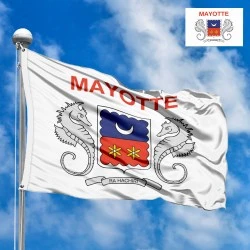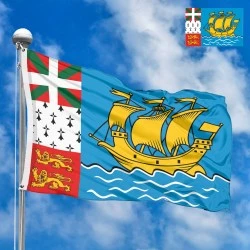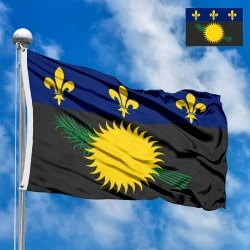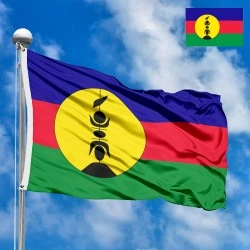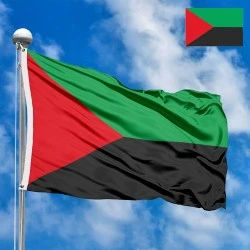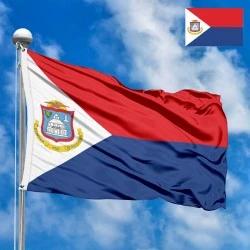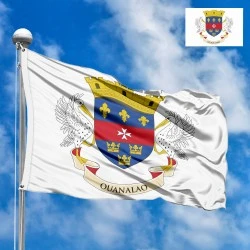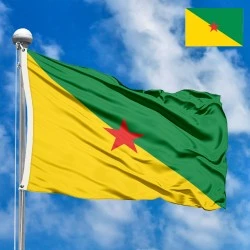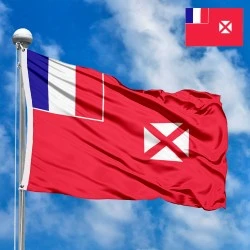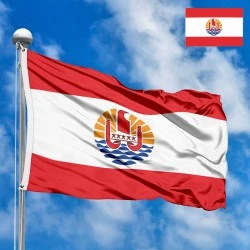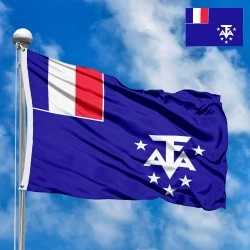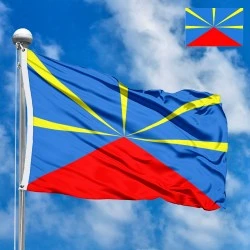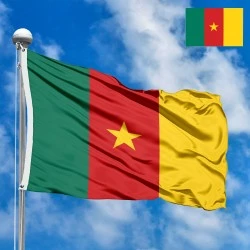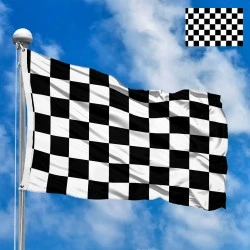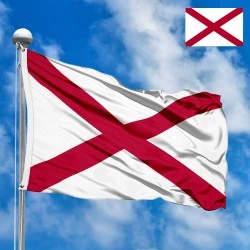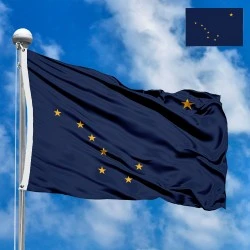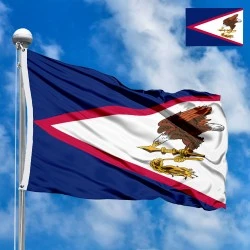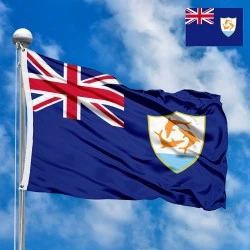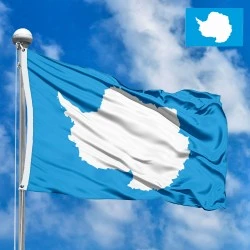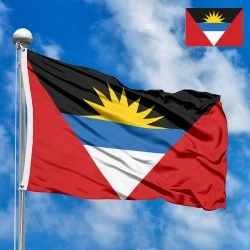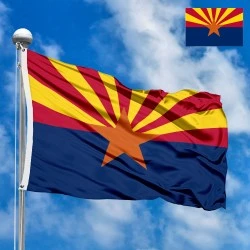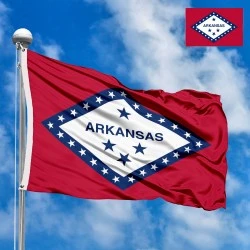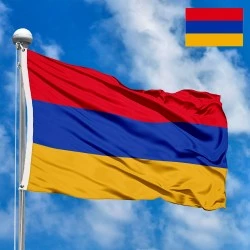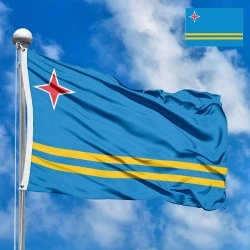Flag of France
- Flag Type: State
- Proportions (official): 2:3
- Official name: French Republic
- Local name: France
- Sovereignty (year): YES (843)
- Member of Organizations: UN, NATO, European Union, Pacific Community
- Country code, territory: FR, FRA, 250
- Capital: Paris
- Large cities: Marseille, Lyon, Toulouse, Nice
- Population: 64,800,000 (2024, INSEE)
- Religions: Catholic ~45%, No religion ~40%, other/none ~15%
- Area (km²): 551 695
- Highest point: Mont Blanc (4,808.72 m)
- Lowest point: Mediterranean Sea (0 m)
- Currency: Euro (EUR, €)
- Languages: French
- Dialing code: +33
- National domain: .fr
Flag Information
General information
Demography and Culture
Economy and communications
- All Flags
- Flags of Countries by Continent
-
Flags of Organizations
- Flags of UN countries
- Flags of the European Union countries
- Flags of NATO countries
- Flags of the countries of the Organization of Islamic Cooperation
- Flags of the countries of the Organization of American States
- Flags of the Arab League countries
- Flags of the African Union countries
- Flags of the countries of the Union of South American Nations
- Flags of the Commonwealth of Nations
- Flags of the countries of the Secretariat of the Pacific Community
- Flags of the Nordic Council countries
- Flags of the Caribbean Community
- Flags of the countries of the Association of Southeast Asian Nations
- Flags of the East African Community
- Flags of the countries of the Organization of Turkic States
- LGBT Community Flags
- Historical Flags
- Ethnic Flags
- Flags of the USA (states)
Description
The national flag of France, famously known as the "Tricolour" (le Tricolore), is one of the world's most iconic and historically significant national symbols. Comprising three vertical stripes of equal width – blue, white, and red – it stands as a powerful emblem of the French Republic's foundational values: Liberty, Equality, and Fraternity (Liberté, égalité, fraternité). While its modern form was definitively adopted during the Third Republic (1870-1940), the origins of this design are deeply rooted in the tumultuous and transformative period of the French Revolution (1789). The Tricolour is not merely a state symbol; it is a vibrant testament to a nation's journey through revolution, empire, and republics, encapsulating centuries of struggle for democratic ideals and national unity. It represents the collective spirit and enduring legacy of France on the global stage.
Dimensions, Colors, and Arrangement of Elements: The design of the French Tricolour is remarkably simple yet rich in symbolism, with precise specifications that have evolved over time.
-
The flag consists of three vertical stripes of equal width: the hoist-side stripe is blue, the middle stripe is white, and the fly-side stripe is red. This arrangement is visually striking and instantly recognizable.
-
Historically, the dimensions of the stripes were not always equal. For a period, especially under Napoleon, the widths varied slightly (blue 30%, white 33%, red 37%) to create an optical illusion of equal width when the flag was fluttering. However, since the Constitution of 1958, the official proportions specify equal widths for all three stripes.
-
The official dimensions (aspect ratio) of the flag are 2:3 (height to width), making it a relatively compact and widely used proportion for national flags.
-
The specific shades of the colors were slightly altered in 2020 by President Emmanuel Macron's administration, returning to a darker, more historically accurate navy blue (Pantone 282C, also known as "marine blue" or "dark blue") instead of the lighter blue (Pantone 293C) that had been in use since 1976. The red is typically Pantone 186C, and the white is a standard white. This return to the darker blue aimed to reconnect the modern flag with its revolutionary origins and the colors of the French Navy, emphasizing historical continuity.
History of the Flag's Creation and Adoption: The genesis of the French Tricolour is intertwined with the seismic events of the French Revolution, marking a radical break from the monarchical past.
-
Before the Revolution, the Kingdom of France predominantly used white flags, often adorned with the fleur-de-lis, symbolizing the Bourbon monarchy. The traditional royal color was white.
-
The red and blue colors were the colors of the city of Paris, associated with the Parisian militia and the revolutionary movement. Blue was also traditionally associated with Saint Martin, the patron saint of France, and with the Capetian dynasty. Red was linked to Saint Denis and later became a symbol of revolutionary fervor.
-
The Tricolour's birth is often attributed to the events of July 1789. Following the storming of the Bastille, the Marquis de Lafayette, commander of the new National Guard, proposed adding a white cockade (representing the King) between the red and blue cockades (representing Paris) to symbolize the reconciliation of the King with his people, or alternatively, the nation's new constitutional monarchy. This combination quickly became known as the "national cockade."
-
On October 24, 1790, the National Constituent Assembly officially decreed the adoption of the red, white, and blue as the national colors for naval ensigns. The design evolved, initially featuring red at the hoist, then white, and finally settling on blue at the hoist, white in the middle, and red at the fly, largely due to the influence of Jacques-Louis David, the celebrated painter and revolutionary.
-
The flag was formally adopted as the national flag of France on February 15, 1794, during the First Republic. It replaced the royal white flag and became a potent symbol of the Republic.
-
Throughout the turbulent 19th century, the Tricolour's use fluctuated with changes in political regimes.
-
With the Restoration of the Bourbon monarchy in 1814, the white royal flag was temporarily reinstated.
-
However, the July Monarchy (1830), led by Louis-Philippe I, saw the definitive return of the Tricolour, which was embraced as a symbol of national unity, bridging the revolutionary legacy with the constitutional monarchy. Louis-Philippe famously declared, "The nation is resuming its colors."
-
The Second Republic (1848-1852) and the Second Empire (1852-1870) continued to use the Tricolour.
-
It was during the Third Republic (1870-1940), however, that the Tricolour became irrevocably cemented as the permanent and universally recognized national symbol of France, enduring through both World Wars and subsequent republics. Its adoption was a deliberate choice to emphasize continuity and republican values after the fall of the Second Empire.
-
-
The flag's design has remained unchanged since, representing the enduring legacy of the French Revolution and the stability of the republican system.
Symbolism and Meaning for Residents: For the French people, the Tricolour is an extraordinarily powerful and emotive symbol, deeply embedded in their national identity and collective consciousness.
-
The three colors are inextricably linked to the motto of the French Republic: "Liberty, Equality, Fraternity."
-
Blue is widely interpreted as symbolizing Liberty. It is also historically associated with the City of Paris, representing the revolutionary spirit of the Parisians.
-
White is often seen as representing Equality. Historically, it was the color of the French monarchy, and its inclusion was initially meant to symbolize the reconciliation of the King with the people, or the concept of a unified nation.
-
Red signifies Fraternity. It is also connected to the City of Paris and the revolutionary movement, representing the passion and sacrifice involved in achieving the Republic's ideals.
-
-
Beyond these core revolutionary values, the flag also symbolizes national unity, sovereignty, and the concept of the Republic (la République) itself. It evokes a sense of shared history, collective struggle, and common destiny.
-
The Tricolour is prominently displayed on all official buildings, schools, and public spaces across France. It is an omnipresent symbol during national holidays such as Bastille Day (July 14th), Armistice Day (November 11th), and Victory in Europe Day (May 8th). These occasions are marked by widespread flag displays, parades, and patriotic ceremonies.
-
The flag is also a rallying point during international events, particularly sporting competitions, where it inspires fervent displays of national pride and unity among supporters. It represents France's standing and influence on the global stage.
-
For many French citizens, the flag is not just a governmental emblem but a living representation of their history, their democratic values, and their commitment to a secular and inclusive society. It serves as a reminder of the nation's past sacrifices and its ongoing pursuit of progress and justice.
Interesting Facts: The French Tricolour, despite its apparent simplicity, carries a wealth of interesting facts and historical nuances.
-
The shade of blue was subject to a subtle but significant change in 2020. President Macron decided to revert from the lighter blue (Pantone 293C), which had been introduced in 1976 by President Giscard d'Estaing to match the blue of the European flag, to the darker "marine blue" (Pantone 282C) that was historically used. This change was a symbolic gesture to re-emphasize the flag's original connection to the French Revolution and the historical navy, asserting a distinct French identity.
-
The order of the colors has always been from hoist to fly: blue, white, red. However, the precise shades and proportions have seen slight variations throughout its history, though the underlying principle of a vertical tricolour has remained constant since its formal adoption.
-
The Tricolour is one of the oldest tricolour flags in the world and has inspired the design of many other national flags, particularly during the 19th and 20th centuries, as other nations adopted republican ideals and sought to symbolize their own revolutions or independence movements. Examples include the flags of Italy, Belgium, and Romania, which are also tricolours, albeit with different color combinations and orientations.
-
During the Occupation of France in World War II, the Vichy regime officially continued to use the Tricolour, but its meaning was heavily distorted. The Free French Forces, led by General Charles de Gaulle, also used the Tricolour, often with the Cross of Lorraine added, symbolizing resistance and the true spirit of the Republic. This highlights the flag's resilience and its ability to represent opposing factions during times of national crisis.
-
Although less commonly known outside France, the "Marseillaise" (the French national anthem) and the Tricolour are equally revered national symbols, both deeply rooted in the revolutionary period and representing the nation's unwavering commitment to its core values.
In the demonstration images, full-size flags are shown with proportions of 2:3, and hand-held flags with proportions of 1:2.
Donation
Download
Completely free for commercial and non-commercial use (public domain).
You can freely use them in your news magazines, websites, software, mobile applications.
We appreciate a backlink to https://flagssite.com
Raster files - Flag of France (PNG, JPG)
 Waving flag
Waving flag
- PNG format (transparent background), 72dpi, dimensions in Pixels (px), aspect ratio 3:4.
- 15х20 px
- 30х40 px
- 60х80 px
- 120x160 px
- 240x320 px
 Sizes:
Sizes:
"v15" - image size (by height); if necessary, replace with available: v15, v30, v60, v120, v240.
!!! For resizing, use the Latin (eng) keyboard layout.
<img src="https://flagssite.com/flags/v15/20237.png" alt="Flag of France">
 Round flag
Round flag
- PNG format (transparent background), 72dpi, dimensions in Pixels (px), aspect ratio 1:1.
"d15" - image size (diameter); if necessary, replace with available: d15, d30, d60, d120, d240.
!!! For resizing, use the Latin (eng) keyboard layout.
<img src="https://flagssite.com/flags/d15/20237.png" alt="Flag of France">
 Rectangular flag 2:3
Rectangular flag 2:3
- JPG format, 72dpi, dimensions in Pixels (px), aspect ratio 2:3.
"h30" - image size (by height); if necessary, replace with available: h15, h30, h60, h120, h240, h360, h480.
!!! For resizing, use the Latin (eng) keyboard layout.
<img src="https://flagssite.com/flags/h30/20237.jpg" alt="Flag of France">


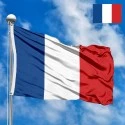
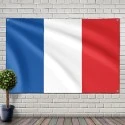
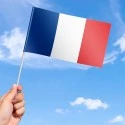

 Sizes:
Sizes:
 Sizes:
Sizes:
